How “The Pitt,” “Shrinking,” and “Paradise” Are Proving You Can Still Make Hit TV in Los Angeles
Runaway production in California accelerated in recent years as films and TV shows took advantage of tax credits offered by other states and countries. Shut downs caused by Covid and strikes didn’t help matters, nor did the fires that raged through Los Angeles in January. To help reinvigorate Hollywood, the state of California in July passed a $750 million tax rebate program that rewards productions with cash incentives to stay in L.A. This is great news for the many, many filmmakers and TV creators who live in the state and want to work there.
Even without the expanded tax credits in place, prestige TV series this year have been leading by example: Emmy-nominated shows The Pitt, The Studio, Paradise, Abbott Elementary, and Shrinking are all filmed in Los Angeles County. The Credits spoke to key talents for three of these productions about how they create high-end television in Southern California while still earning a profit for their networks.
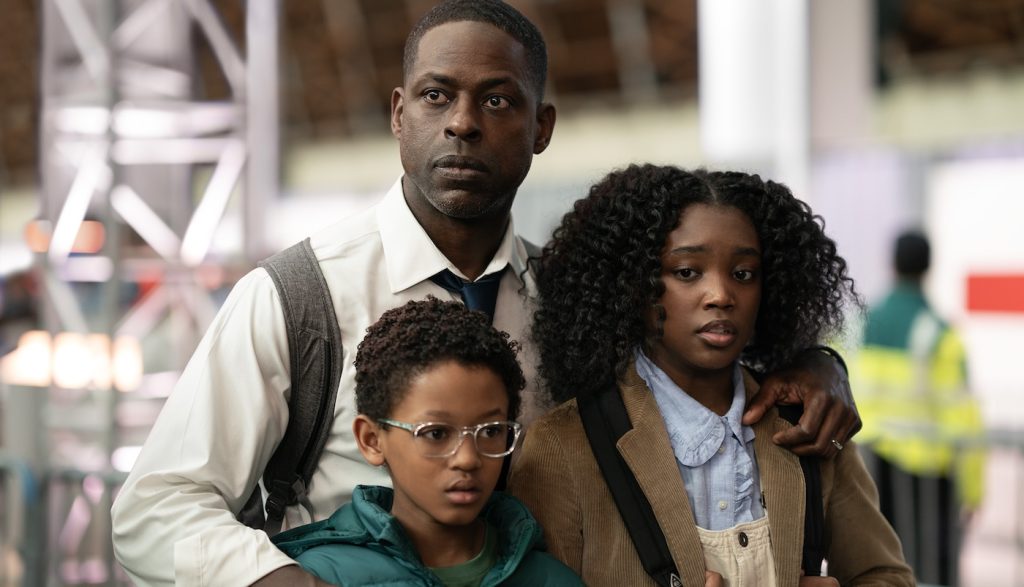
PERCY DAGGS IV, STERLING K. BROWN, ALIYAH MASTIN
EXECUTIVE PRODUCER JOHN HOBERG, PARADISE (nominated for four Emmys)
Hoberg previously wrote or produced series including American Housewife, Black-ish, and My Name Is Earl.
You came to Hollywood in the late nineties. How have you seen things change?
I remember when my wife and I co-wrote a show called Gallivant and went to England to shoot it in 2014 – that was a rare treat. Now I wish for the days when everyone stayed in L.A., and the lots were filled, and you’d go to the cafeteria and run into friends from other shows. Now, the downturn in the number of shows means a lot of my friends are between jobs or they’re going off to New York or Atlanta.
Paradise creator Dan Fogelberg and star Sterling K. Brown came from the hit series This Is Us, which presumably earned them enough clout to shoot in California, even though the story takes place in Washington, D.C., and the Rocky Mountains.
Dan’s crew from This Is Us had been together for five years, so that was important, Steve Beers, his producer, is an L.A. guy, shooting on the Paramount soundstage was important so I think Dan Fogelberg and Sterling K. Smith were like “We’re shooting this in L.A,” almost like “This is the price of the show.”
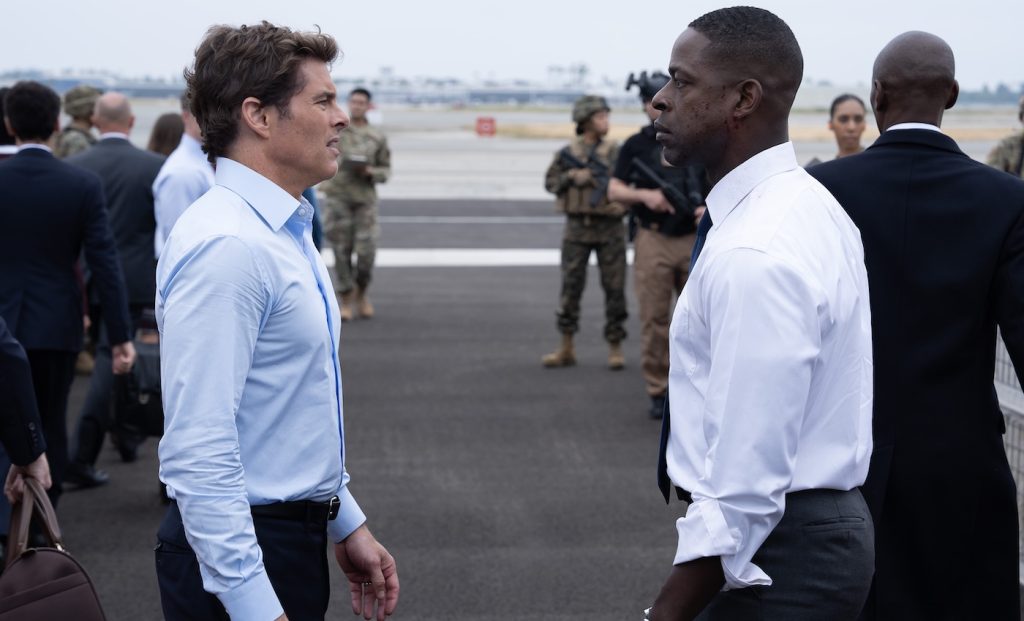
JAMES MARSDEN, STERLING K. BROWN
And then it becomes about making the numbers work?
There was a lot of discussion about how to do it on budget, and the more we looked around, the more we realized everything we needed was here. We had flashbacks for [Jon Beaver’s character] Billy Pace that take place in the Colorado mountains, and we shot that at Frazier Pass [in neighboring Ventura County]. Our location guy, Duffy Taylor, is an encyclopedia of Los Angeles locations, and he can find anything. The White House South Lawn is actually the Arboretum in Pasadena.
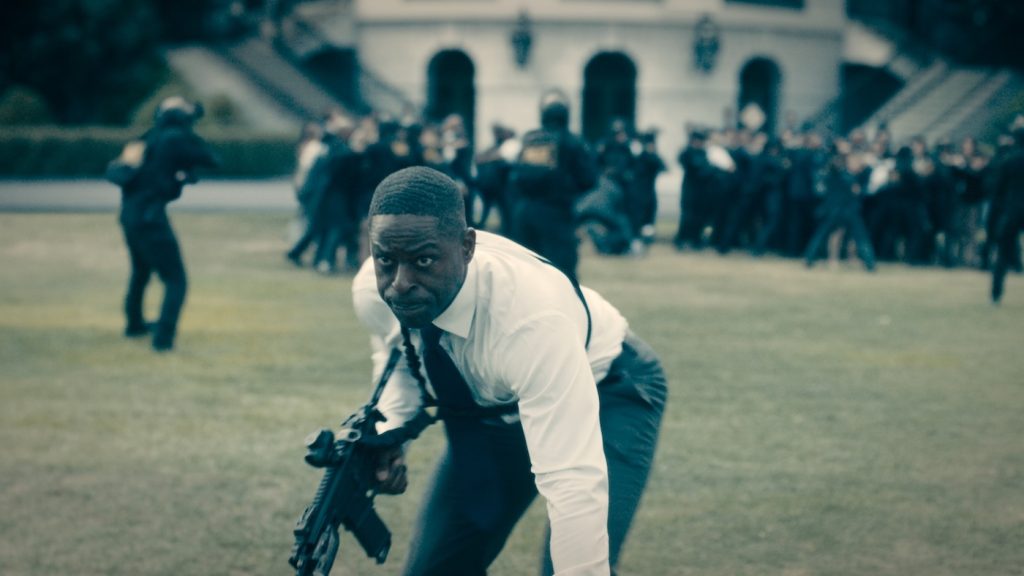
STERLING K. BROWN
It clearly helps to have a wealth of locations to choose from.
There are also people eager to get film money for locations, so there are lots of places that say, “Yes, please film here, we would love it.”
What was it like when you first started shooting Paradise in early 2024 on the Paramount lot?
When we did our first season at Paramount, the lot was feeling kind of empty. You’re supposed to feel the smell of pine wood being freshly cut because they’re building sets, you’re supposed to see the hustle and bustle of people in costumes wandering around everywhere, you want be stepping back so you don’t get hit by a rolling set. That’s what you want to see. Things are picking up now and we’re starting to hear a lot of hammers again, which is good.
LOCATION MANAGER DAVID FLANNERY, SHRINKING (nominated for 7 Emmys)
Flannery grew up in L.A.-adjacent Pasadena and previously managed locations for Based on a True Story and the Saved by the Bell reboot.
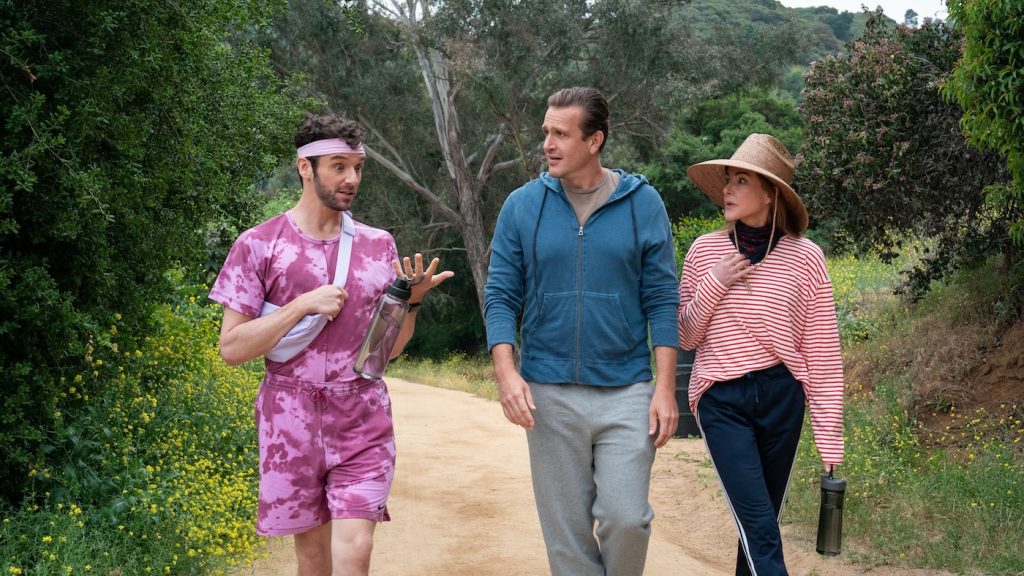
At a time when so many other projects go out of state, why was it essential to make Shrinking in Pasadena and Altadena?
Whether you know it or not, Pasadena has shown up in thousands of movies. It shows over the decades, particularly for its architecture — Arts and Crafts, Spanish, mid-century, and colonial. Not only that, but these communities have older growth trees and more space around the houses. But Shrinking is interesting because we don’t shy away from being here. When we film the bench scenes in Pasadena’s Central Park, where Harrison Ford and Jason Segel meet, we don’t have to change street signs to say “We’re in Indiana.” Our characters go to the Rose Bowl, and we show the sign. People have filmed at the Bowl so many times, but then they put in CGI to make it seem like you’re in Pittsburgh or New York or whatever. As someone who grew up here, it’s just freeing as a filmmaker to show off this part of the world. Locations don’t drive the story in Shrinking, but by setting the series in a very real place, it helps tell us who the characters are and what kind of world they live in.
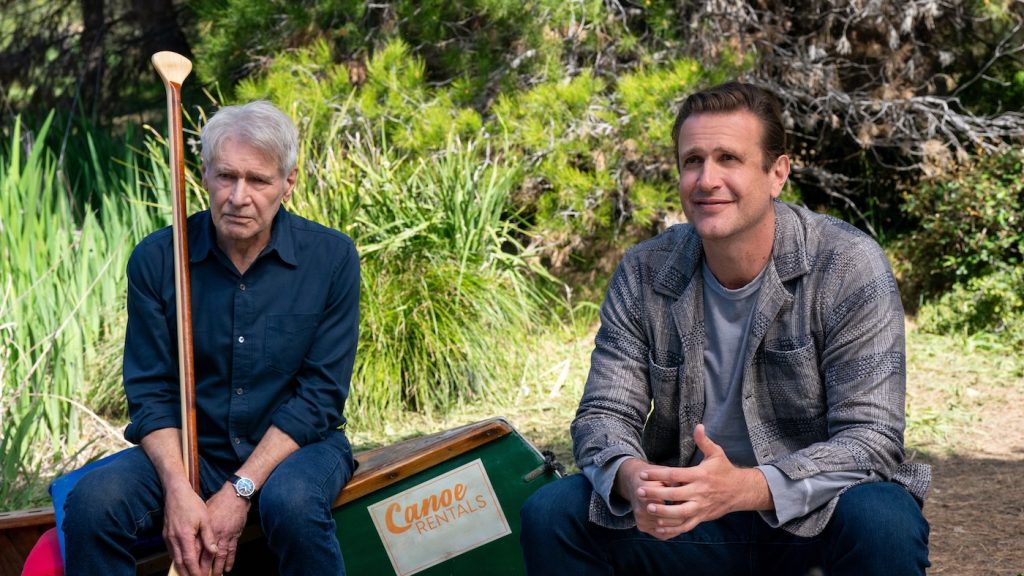
In some ways, Pasadena has this pleasant Anywhere U.S.A. quality, but Jason Segel’s character Jimmy spells out the specifics right at the start of the series.
In the pilot episode, Jimmy parks his car on the curb, and his Black friend Sean is like, ‘What are you doing?’ Jimmy tells Sean, “Don’t worry, I’m a white doctor in Pasadena; the cops will probably take it back to my house for me.”
You’re fortunate to be working on a hit show, but how have you seen the general slowdown affecting your fellow creatives?
I’m a Teamster. We have drivers, dispatchers, animal wranglers, casting – these are blue-collar jobs done by everyday, salt-of-the-earth people who save money, put it back into the economy, buy a house, and coach their kids’ softball games. So, for the hundreds of people who don’t get staffed on a show, they either have to travel somewhere else or ride it out. That’s been difficult.
As if Covid and strikes weren’t enough, the January wildfires devastated Altadena and parts of Pasadena, which means Shrinking now needs to contend with a new environment. How have you guys addressed the fires in terms of production?
Because so much filmmaking [for Shrinking] happened in Altadena and Pasadena, it’s been important for us to go into those communities that have been affected and make sure people there understand that we are partners in all this. I live in Pasadena, but I was displaced from my house due to the fire, so now I’m living in a temporary home in [nearby] Mount Washington. L.A. County and the City of Pasadena recognize that the rebuild effort will be closely tied to the success of filmmakers returning to the area.
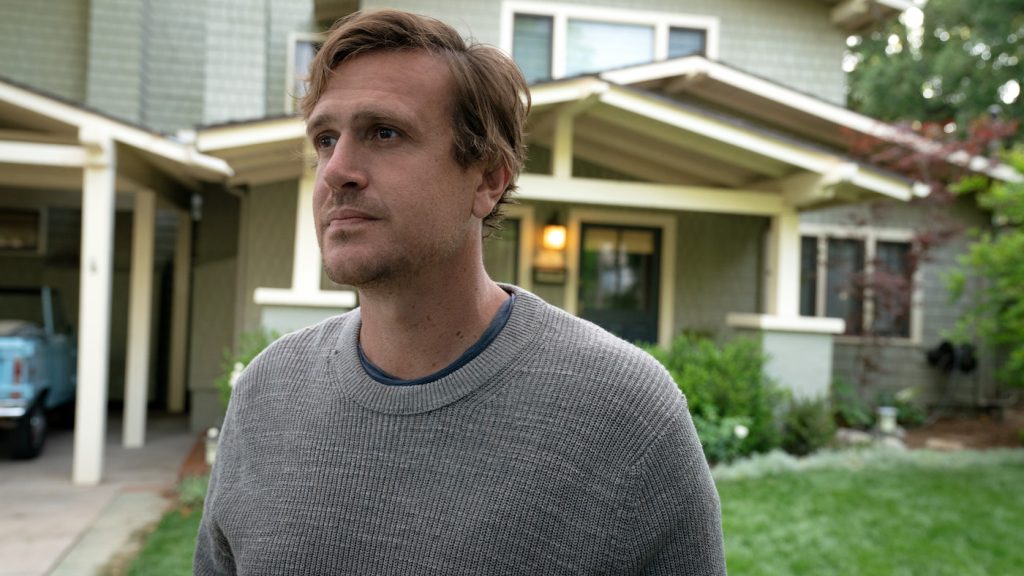
CREATOR/SHOWRUNNER R. SCOTT GEMMILL, THE PITT (nominated for 13 Emmys)
Gemmill previously produced ER, JAG, and NCIS: Los Angeles.
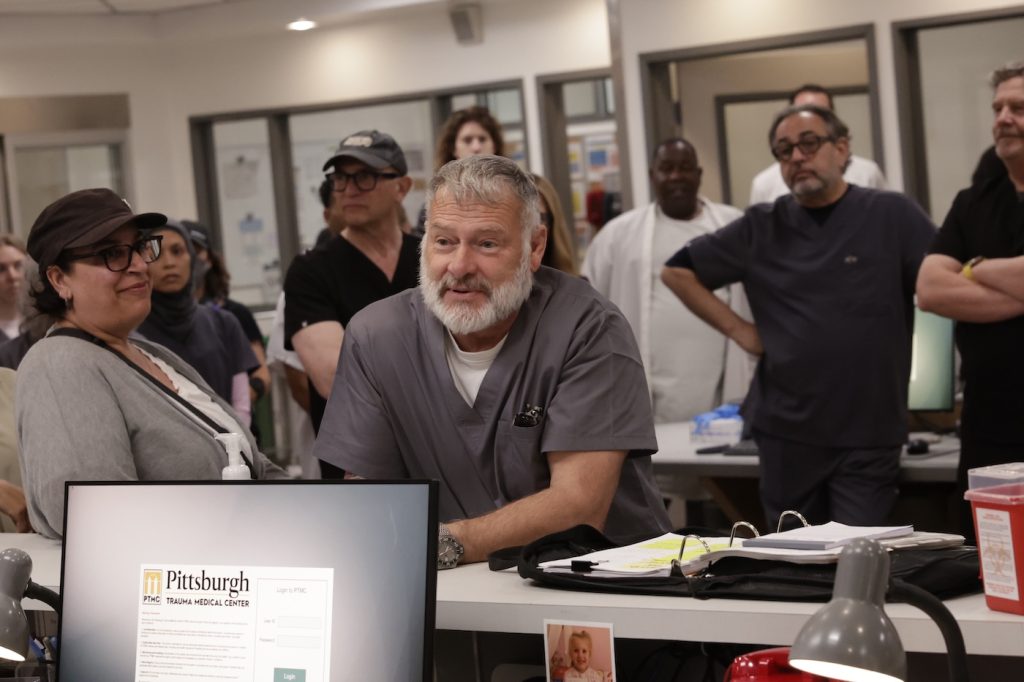
Because it’s essentially a single-location drama, The Pitt could have been produced in any state or country equipped with quality soundstages, but you chose to shoot in L.A. County on the Warner Bros. lot in Burbank. Why?
I think it’s important! When I was younger, Hollywood was the place you came to make movies and TV. Sadly, it’s not the epicenter it once was. This is the first show that Noah [Wylie]’s done since he left ER in 2005 that’s been shot in Los Angeles. Think about how long that’s been! He’s worked in Toronto, Vancouver, and Louisiana, which are great places, but I think this is where we do our best work. L.A. is also where we have our best craftspeople.
How do your relationships with the local crew affect the quality of the show?
Filming out of state, you’re hiring new crews, working with people you don’t know—nothing wrong with that—but on this show, there are a lot of people we’ve worked with in the past, so we have a shorthand and we work really fast. In a way, that translates into the nature of the show itself, which has a lot of kinetic energy.
How did you persuade HBO to keep production in L.A.?
From day one, we figured we would shoot it here, and there was never a battle because our show is very affordable in that it’s only one set. Since we don’t have to go out to shoot on location, we can offset a lot of costs that maybe would have been saved by going elsewhere [out of state].
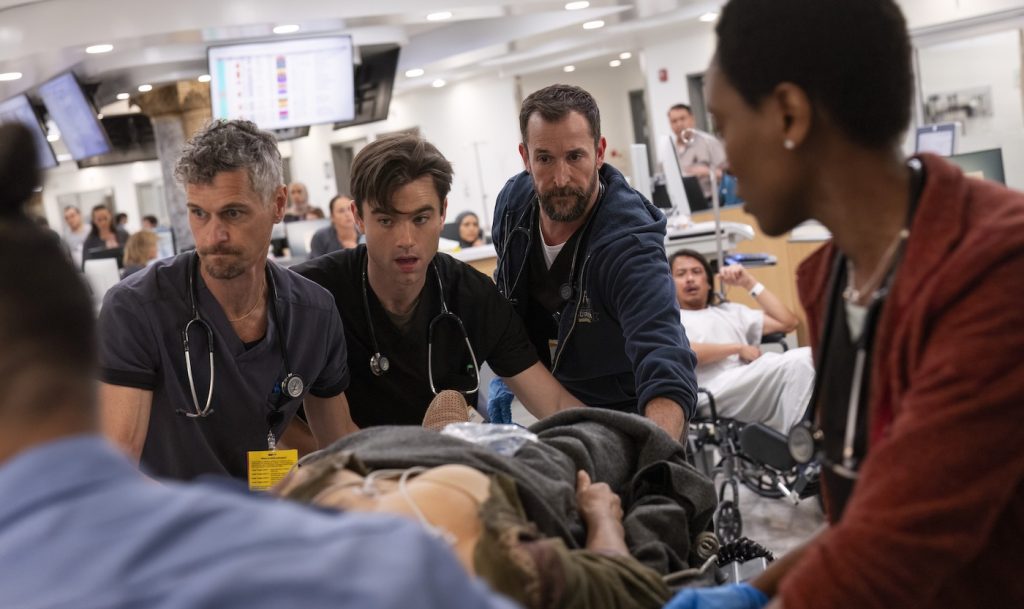
Noah Wylie, who lives in Los Angeles, must have been bullish on shooting locally?
Absolutely. We all were. We want people to come to work, go home, and spend time with their families. That’s not always the case [in states] where there may be a cost benefit, but there’s also a deficit in quality of life.
California recently passed a new tax credit program. Do you believe it will make a difference?
I think it’s a start. For California not to have had a good tax credit all these years seems incomprehensible. There’s a reason these other places became more popular, and in some ways, it was our fault. I don’t know if people took it for granted that the industry would always be here, but we’ve taken a beating, exacerbated by Covid and the strikes. Business has not completely bounced back by any means. I still know a lot of people who are not working and want to work, but the shows aren’t there right now.
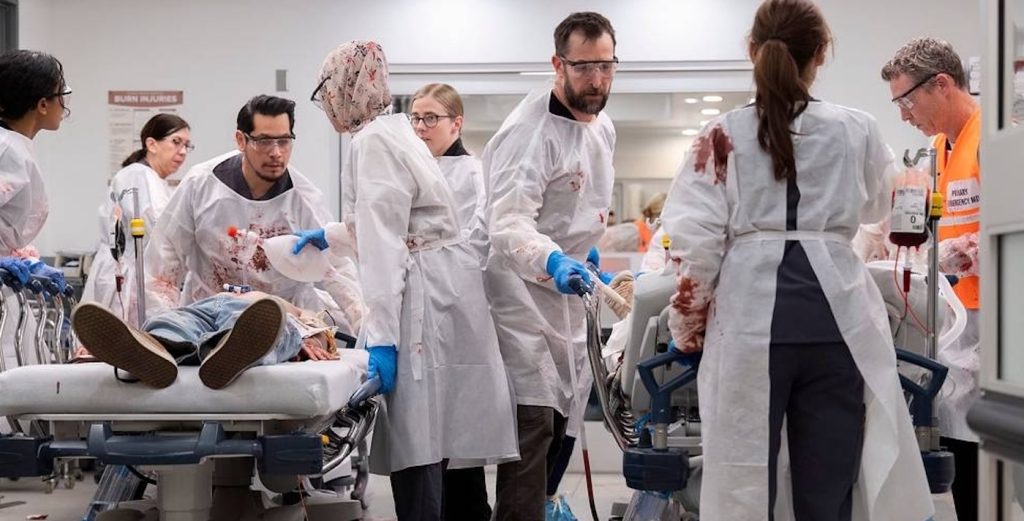
You previously produced NCIS: Los Angeles, which included numerous exterior locations throughout the city. Now with The Pitt, it looks like nearly everything you need is within walking distance from your office.
That’s the Mill [creative compound] behind me [pointing back toward the window of his office]. I can just walk through the Mill and I’m on set, so I can visit The Pitt multiple times a day, or walk down the hall here, pop my head in the door and see my production designer, my set tech, my prop master, and have conversations that solve problems before they become a problem. When you don’t have that kind of immediacy, things can slip through the cracks. Being able to interact with your team in person and being physically close to production – that’s the best scenario.
When you have proximity to talent…
And other shows too. The Studio shoots on Warner Brothers as well, they’re [on the floor] right above us. The energy you get just from being on a movie studio lot where you see writers and actors and crew people – it’s a great environment.
Featured image: Isa Briones, Tracy Ifeachor, Noah Wyle. Photograph by Warrick Page/Max

